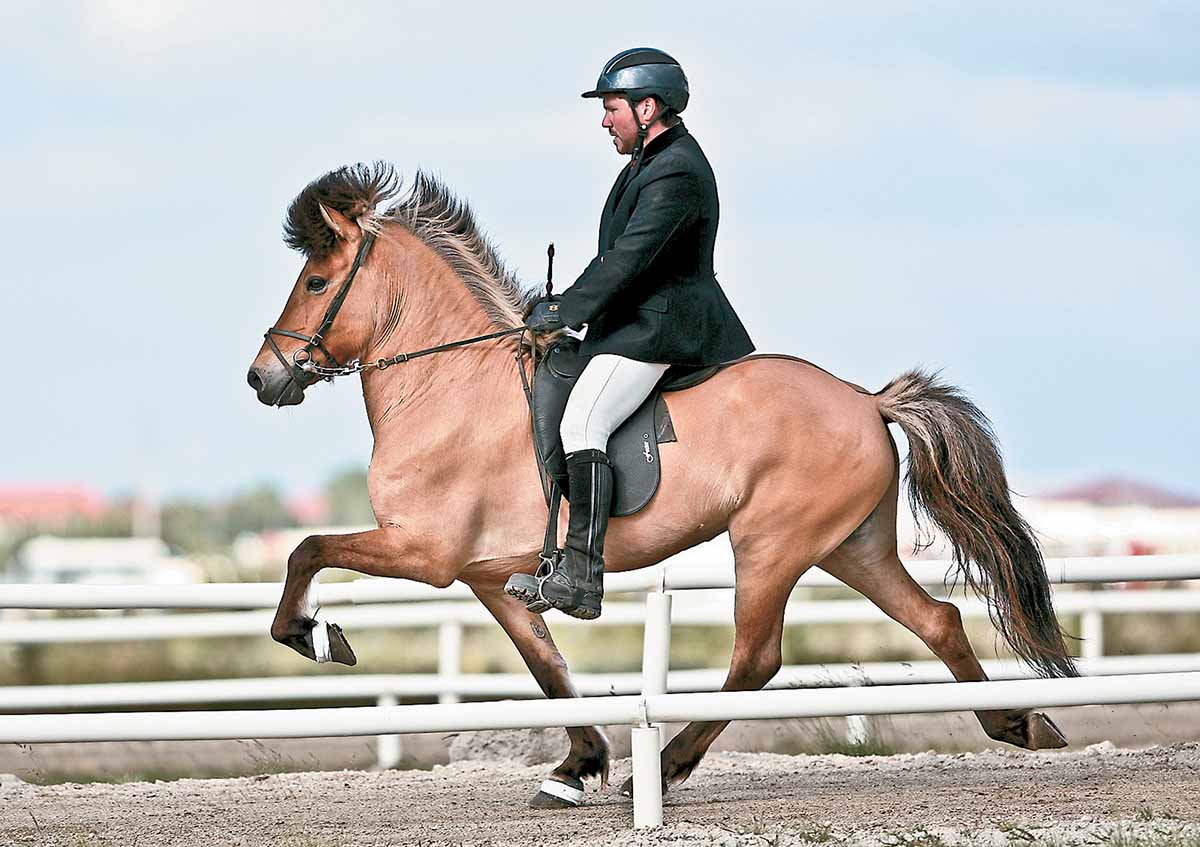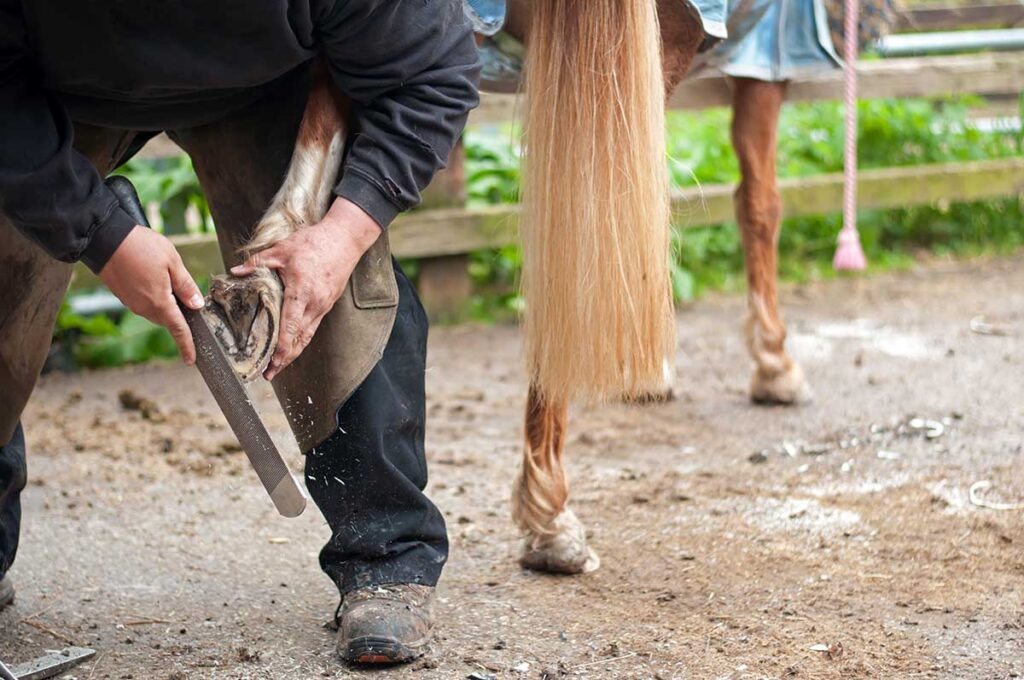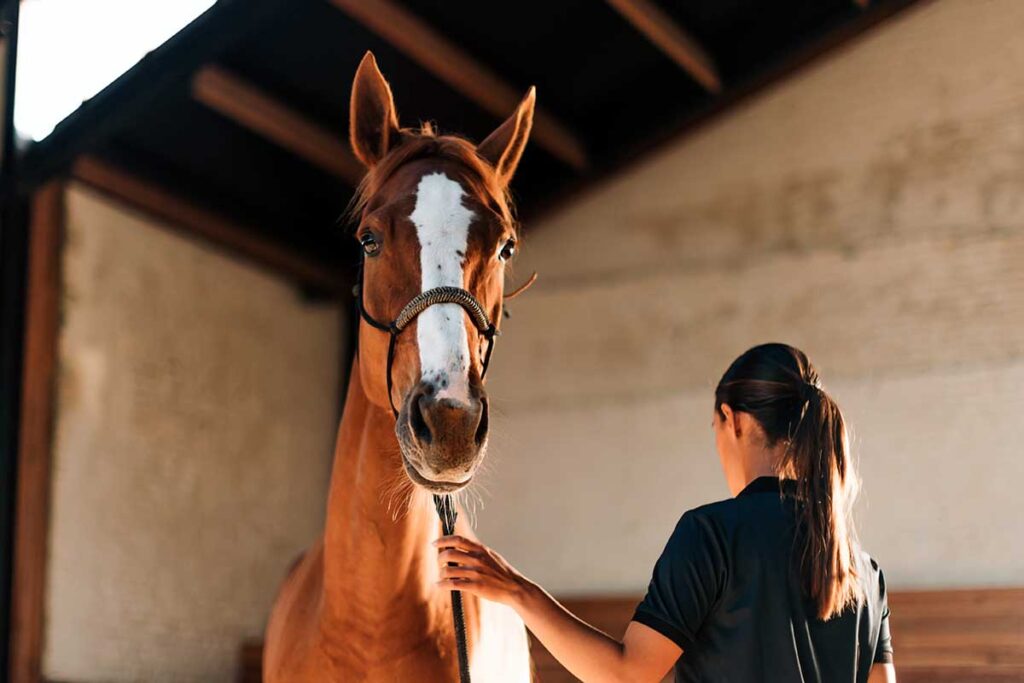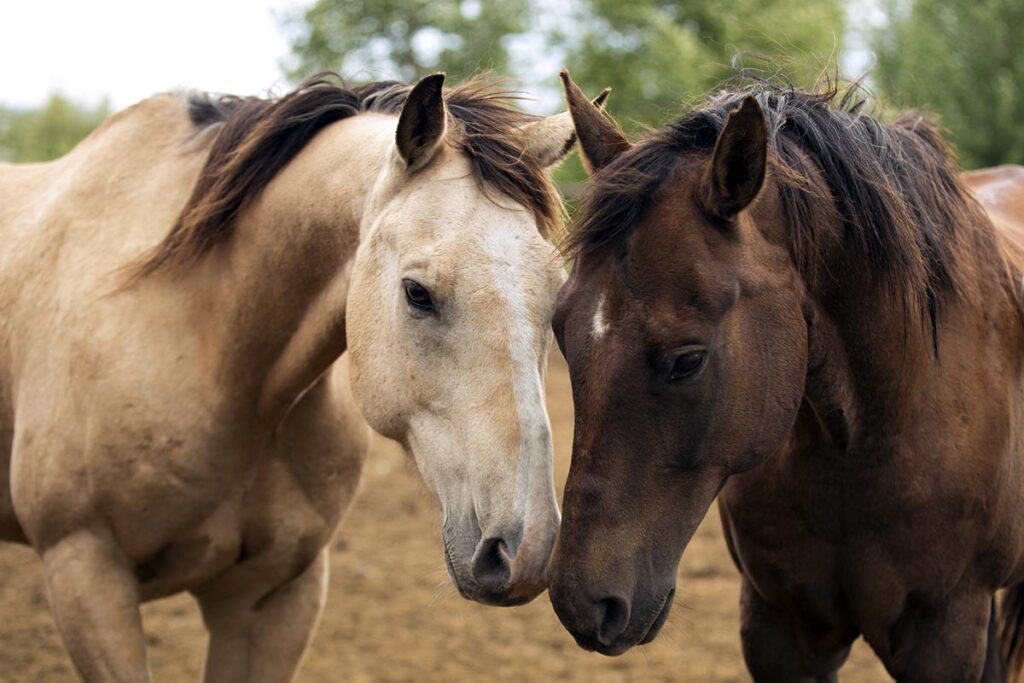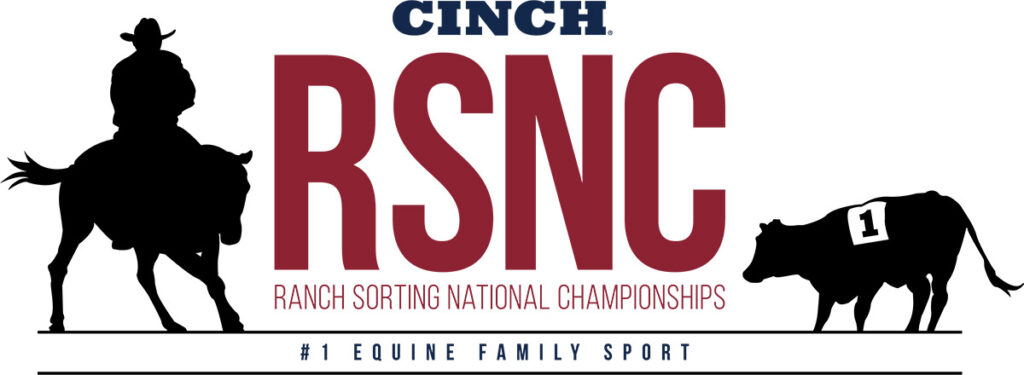Horses are athletic animals designed for movement, but they don’t all move in the same ways. Here, we’ll look at the basic horse gaits, as well as some unique ones only certain breeds can perform.
When we discuss gait patterns, we’ll refer to the legs as:
- Right forelimb—RF
- Left forelimb—LF
- Right hind limb—RH
- Left hind limb—LH
Basic Horse Gaits
Walk: A four-beat gait, meaning each leg moves independently.
Example footfall sequence: RH, RF, LH, LF

Trot (or jog): A two-beat gait in which the legs move in diagonal pairs.
Example footfall sequence: RF and LH, LF and RH
Canter (or lope): A three-beat gait in which one pair of legs strikes the ground simultaneously and the other two land independently. The horse has two canter “leads”—his LF limb lands last when he’s on the left lead, and his RF lands last when he’s on the right lead.
Left lead footfall sequence: RH, LH and RF, LF
Right lead footfall sequence: LH, RH and LF, RF
Gallop: A four-beat gait in which each leg moves independently. The gallop also has left and right leads.
Left lead footfall sequence: RH, LH, RF, LF
Right lead footfall sequence: LH, RH, LF, RF
Breed-Specific Horse Gaits
Pace: A two-beat gait performed by some breeds (including Standardbreds, which often race in a pace rather than a trot) in which the limbs move in lateral pairs.
Example footfall sequence: LF and LH, RF and RH
Flying pace: Some, but not all, Icelandic horses can perform the “flying pace”—essentially, a pace at speeds reaching up to 30 miles per hour—over short distances (100 to 200 meters). The flying pace is widely known as the pinnacle of Icelandic horse riding and is generally performed by experienced riders.
Example footfall sequence: LF and LH, RF and RH
Ambling gaits: An “ambling gait” is any of several unique four-beat gaits with the same footfall sequence as a walk. These gaits are all faster than a walk but usually (not always) slower than a canter. Ambling gaits are smooth to ride, and horses can usually sustain them for long periods. Following are a few examples of ambling gaits and some of the breeds that perform them.
Example footfall sequence: RH, RF, LH, LF
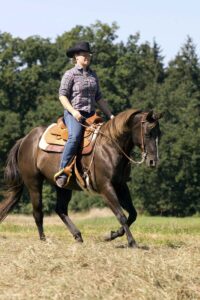
Rack: Several gaited breeds rack, including Saddlebreds, Rocky Mountain Horses, Spotted Saddle Horses, and the aptly named Racking Horse. The rack has the same footfall pattern as a normal walk but is performed at a higher speed and with high-stepping action in front.
Running walk: A gait unique to Tennessee Walking Horses, the running walk is often performed at a higher speed and with high-stepping action in front. The horse’s hind hooves pass over and past the tracks left by the front hooves—the right rear surpasses the right and the left rear surpasses the left front.
Fox trot: The Missouri Fox Trotter’s token gait, the fox trot is a four-beat that’s sometimes described as the horse walking with the front legs and trotting with the hind. Performed properly, the horse will always have at least one foot on the ground.
Tölt: Icelandic horses are known for their ambling gait, the tölt. Icelandic horses can tölt at a slow speed or a fast one—up to about 20 miles per hour.
Fino: The Paso Fino’s most recognizable gait—the fino—has the same footfall patterns as other ambling gaits but with two distinct characteristics. First, the forward motion is very slow. Second, the steps are rapid and exceedingly short.
Take-Home Message
Each equine gait serves a unique purpose. From the steady and relaxed walk to the exhilarating gallop, horses’ gaits showcase their incredible athleticism and coordination. By understanding the biomechanics and characteristics of each gait, you can communicate more effectively with your horse and enjoy controlled movements and a balanced ride.

